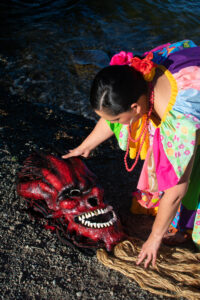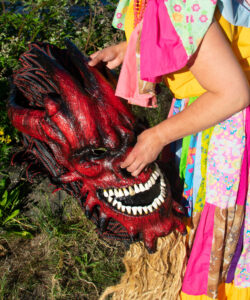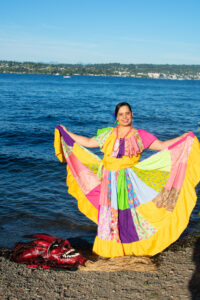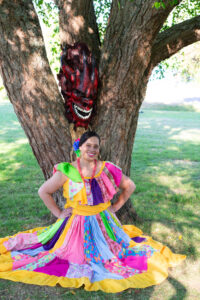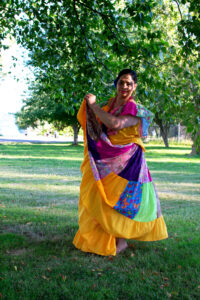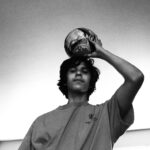Photography by Pedro Martínez-Pinto
Interview
Question:
Tell me a bit about yourself.
Answer:
I wouldn’t characterize myself as one root because I think I am a mix of three different productions. I have a little bit of Indian in me, native from Panama, I have a little bit of African because my dad’s background is Irish and black as well. And I also have the spanish. I’m just a bit of all three. I was born in the city of Colón, on the Atlantic side of Panama, which is surrounded in abundance by the influence of African “Negre”, and a lot of Jamaican influence too. You see a lot of dark skin towards that side of the country. As for myself, I’m always on the go. I find that there is no challenge in life other than giving your best to everything you do. That’s my way of describing myself: I’m not afraid of any challenge, I’m always very active and I find love with music and dance, I adore animals, and I love food.
Q: That makes me wonder, how did you end up coming to the US, what’s your story with regards to that?
A: I grew up on the Atlantic side of Panamá, 9 provinces. We have the canal zone; with that said, we had a strong US military presence in our territory for safety and preparation of the engineering system until by political agreement to remove troops and staff administration to the Panamanian citizens in 2000. I fell in love with a soldier who I’ve been married to and then I moved to the US. That’s what brought me into this area, then I formed a family. At the same time, throughout my childhood I was always involved with music, I was always involved with the dance, especially around the towns and the little street dances they do based on the cultural heritage of some of the communities called congo, a very Afro influenced background. Through high school, I was always involved in participating with dancing. One of my dreams was to be in the International Ballet of Panama, to travel around the world and be able to share with many people this particular talent. What are the odds that years later I’m still doing what I wanted to do in Panama, just in a different way, it’s still very permanent for me to translate all that great culture to many.
Q: Preferred art form?
A: Dancing. What was really fun is that in my neighborhood, later on in the afternoon there would be a circle of people that would gather in the corners, next to the bus stops, doing stuff like playing domino, eating fried food, etc. You’d see some drummers coming along, people dressed in the attire of the congo and I still remember when I was 5 years old and my dad would come along and say “Mija, do you want to dance?” and I would just go ahead and get on the floor and start dancing. That went on for many years, while he was alive, through my childhood I’d live and breathe those types of activities.
Q: What’s the name of the dance you do? Is it one specific dance or is it multiple?
A: I do multiple dances, Panamá has a very impressive side of so many cultures. We have cumbias, and we have mejoranas. But I think one of the factors that is very prominent in the perspective of this program is the influence of the Afro heritage and background. That’s definitely 70% of my passion. Like I said, since I was little that’s something that I grew up seeing, practiced and performed myself, and yes I do all the others dances as well, but because that’s where I happened to be born, and what I happened to see all the time, yes definitely the congo would be the thing that I most often reveal.
Q: Could you tell me a little bit about your dancing and its cultural history and Panama?
A: We have the advancing sound, which is the congo community, and it’s based on a lot of drum sounds, a lot of history that is performed and expressed with colorful dancing (attire). Oftentimes the dancers dance barefoot because they want to be intimate with earth. At the same time, we have the mejoranas and the cumbias which are also part of our myths and colonial history from many of the events which happened in Panamá. Mejorana is one of the examples where the interiorano, the native mestizo from Panamá (between the Indians and the Spanish) usually has a lot of created songs based on histories, expressions, poems, and they’re performed with a guitar and vocally and follow up with a specific routine dance called cumbia. I should also point out that the cumbia is also one of the influences that was brought up way back in the day when Panamá was part of Colombia.
Q: How is performing your art here in the US different? How did moving to the US change the way you practice or see your art form?
A: The way I see it is that it’s been intensified, even though I put a pause into it, I never thought I’d go back to that routine. I was faced with finding people/individuals that I’ve now formed these communities where we promote and cultivate our culture. I found myself to be eager and ambitious to keep myself updated with some of the essentials and dig more into the heritage so that when we talk/perform about it, it is more in depth and is more clean while also putting a little more makeup into our performance as well to make it more distinguished. That way I can keep up with the good things I learned back then but then enhance it in the most contemporary and modern way. This way people can appreciate the entire display.
Q: Could you give me a historical backdrop of your heritage and art in Panamá?
A: Let’s go back to the origins and talk a little about the Afro influence in Panamá which originally spread in the 1500s when we had the first colonizers come in with slaves from Africa. And it spread all the way to the Atlantic: Bocas del Toro, Colón (where I’m from) and then went all the way to Darien. There’re very specific and amazing names like mandingas travelers who reinforced and fought for the liberation and freedom for slaves. Oftentimes when slaves were taken from Africa coming into this stage of life of hard labor, they were subject to extreme abuse. And you have these amazing heroes who would try to fight and take slaves away and flee to different sides of the territory (all across central/south america). You can call them Marruns or Palenqueros, they were communities which were a mix of different origins and tribes from different countries in Africa.
Then you have the Afro-antillanos who were slaves that first came to the islands from the Dominican Republic, Puerto Rico, Trinidad and Tobago. They later made their way to Panamá because of the construction of the Panama canal, the abundance of bananas and agricultural land. You also have the railroad; back in the 1600s they were thinking of the gold rush, they thought that the railroad built in Panamá would go all the way to California.
With that said, we in Panamá, have that Afro influence, especially Jamaican in Colón. On the religious side, you see a lot of Rastafari; they play a lot of reggae and calypso. The Haitian music is pretty common on that side too. And then you have the Congos which are, once again, communities with a lot of heritage from the origins of the colonists. They still practice the dances with the colorful clothing which comes along from women collecting fabric pieces during the day, from the people in power, captains, white folks, etc., and they’d make clothes out of these patterns. At specific times and hours they would have celebrations wearing this particular clothing. Within dances, they often expressed feelings, stories, tributes, ancestors. They danced with drums, which were a call for a lot of the vivid feelings which they seemed to carry from their roots, from what they left behind. I think, even today, every time you hear the drums you can feel them deeply, you can sense some of the passion, the stories, and how they dance.
I’m Pedro Martinez-Pinto . I was born in 2004 in Seattle, Washington (Go Sounders!!) and I’m still growing up here now. Since I was younger (about 7) I’ve been playing soccer at the professional … More





